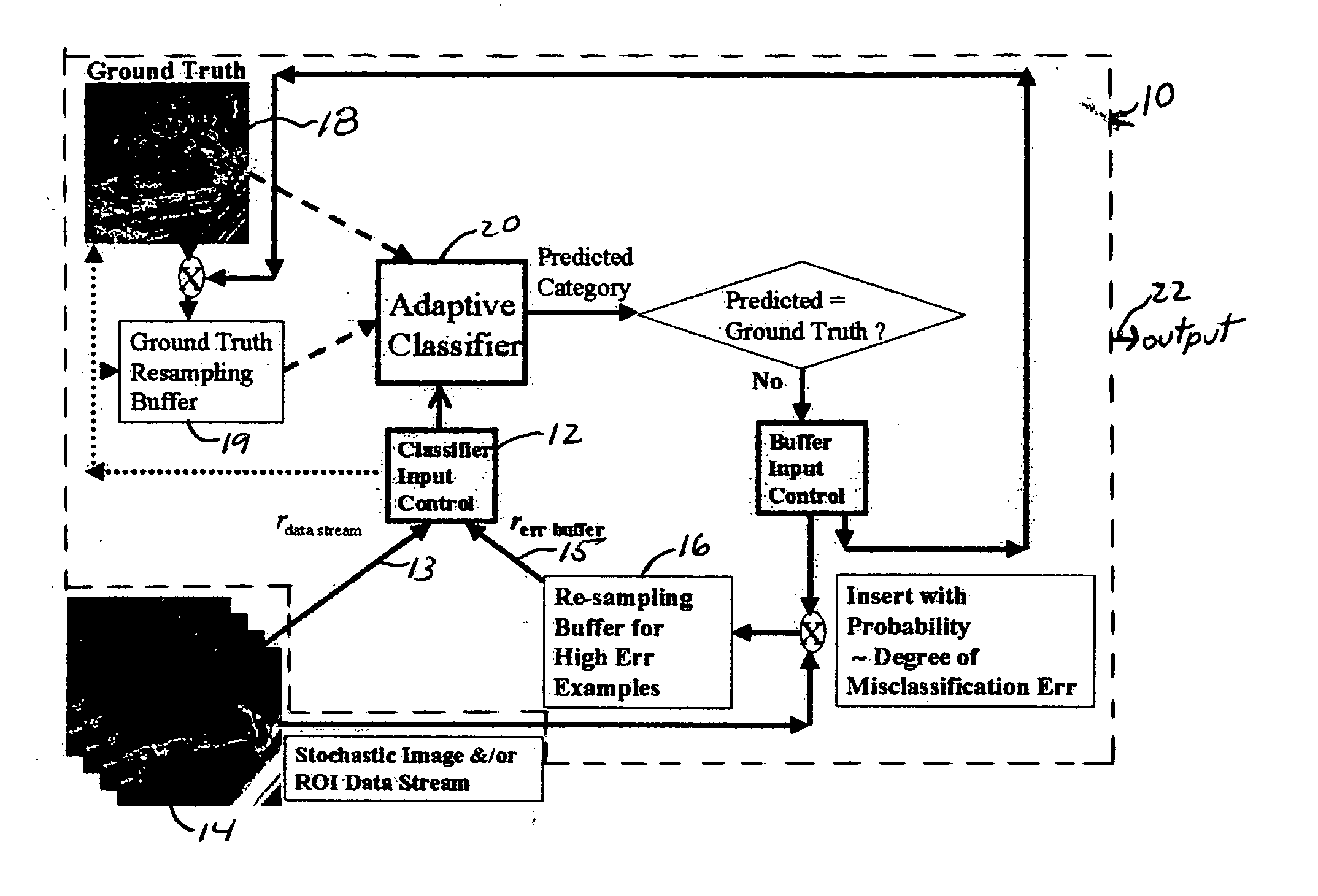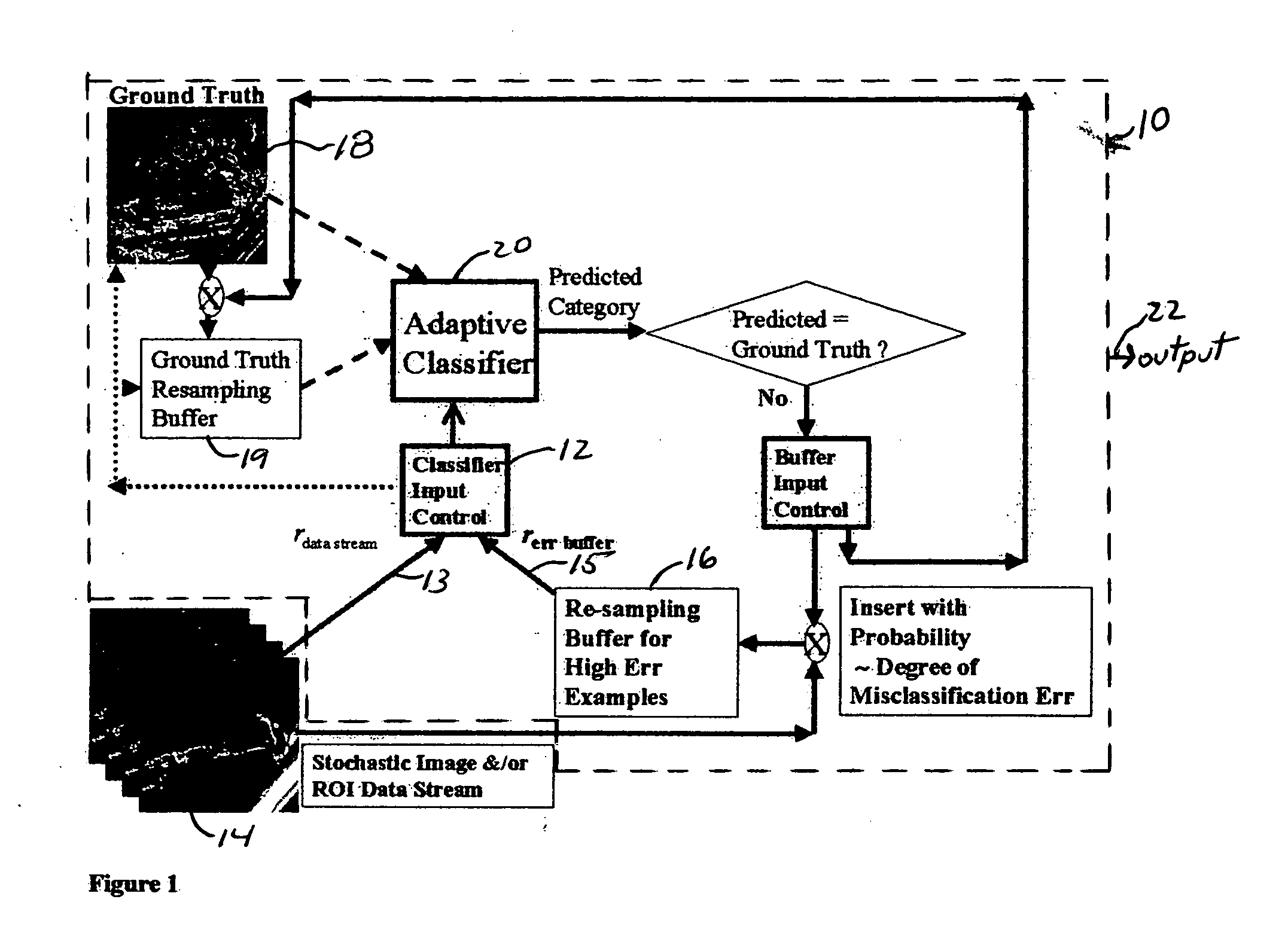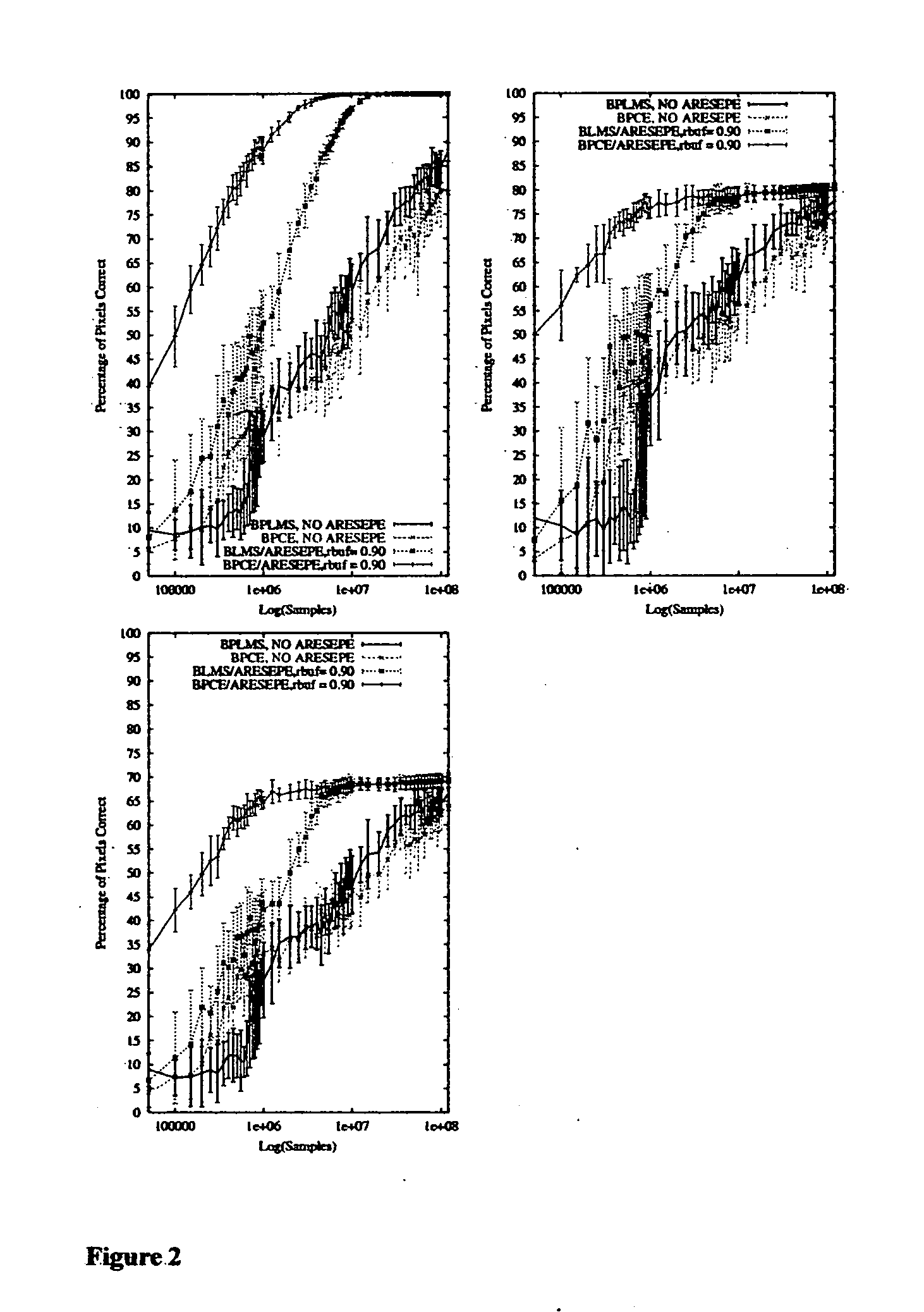Adaptive resampling classifier method and apparatus
a classifier and adaptive resampling technology, applied in scene recognition, instruments, computing, etc., can solve the problems of insufficient optimization time, insufficient training in stochastic optimization routines, and inability to adapt to the needs of users, so as to achieve the effect of minimal computational overhead and storage requirements
- Summary
- Abstract
- Description
- Claims
- Application Information
AI Technical Summary
Benefits of technology
Problems solved by technology
Method used
Image
Examples
Embodiment Construction
[0018] The invention is a classifier that detects when patterns cause mis-classification. These patterns will be both patterns near decision boundaries in the final stages of optimization and those that may be further away in the early phase of optimization. In hyper-spectral applications, I typically encounter data that is highly mixed, so I opt for a practical solution that can be implemented online, recognizing that even as I may accelerate convergence of an algorithm, I may still need to revisit patterns that are error-prone more than once. The invention includes an algorithm wherein is defined a resampling buffer that is part of the total input stream along with the regular data stream, e.g. of images or regions of interest, that comprises the training set. Entry into the resampling buffer is determined online as each pattern is processed, a category response determined, and updates performed; this is what I term Adaptive Resampling Strategy for Error-Prone Exemplars (“ARESEPE”...
PUM
 Login to View More
Login to View More Abstract
Description
Claims
Application Information
 Login to View More
Login to View More - R&D
- Intellectual Property
- Life Sciences
- Materials
- Tech Scout
- Unparalleled Data Quality
- Higher Quality Content
- 60% Fewer Hallucinations
Browse by: Latest US Patents, China's latest patents, Technical Efficacy Thesaurus, Application Domain, Technology Topic, Popular Technical Reports.
© 2025 PatSnap. All rights reserved.Legal|Privacy policy|Modern Slavery Act Transparency Statement|Sitemap|About US| Contact US: help@patsnap.com



